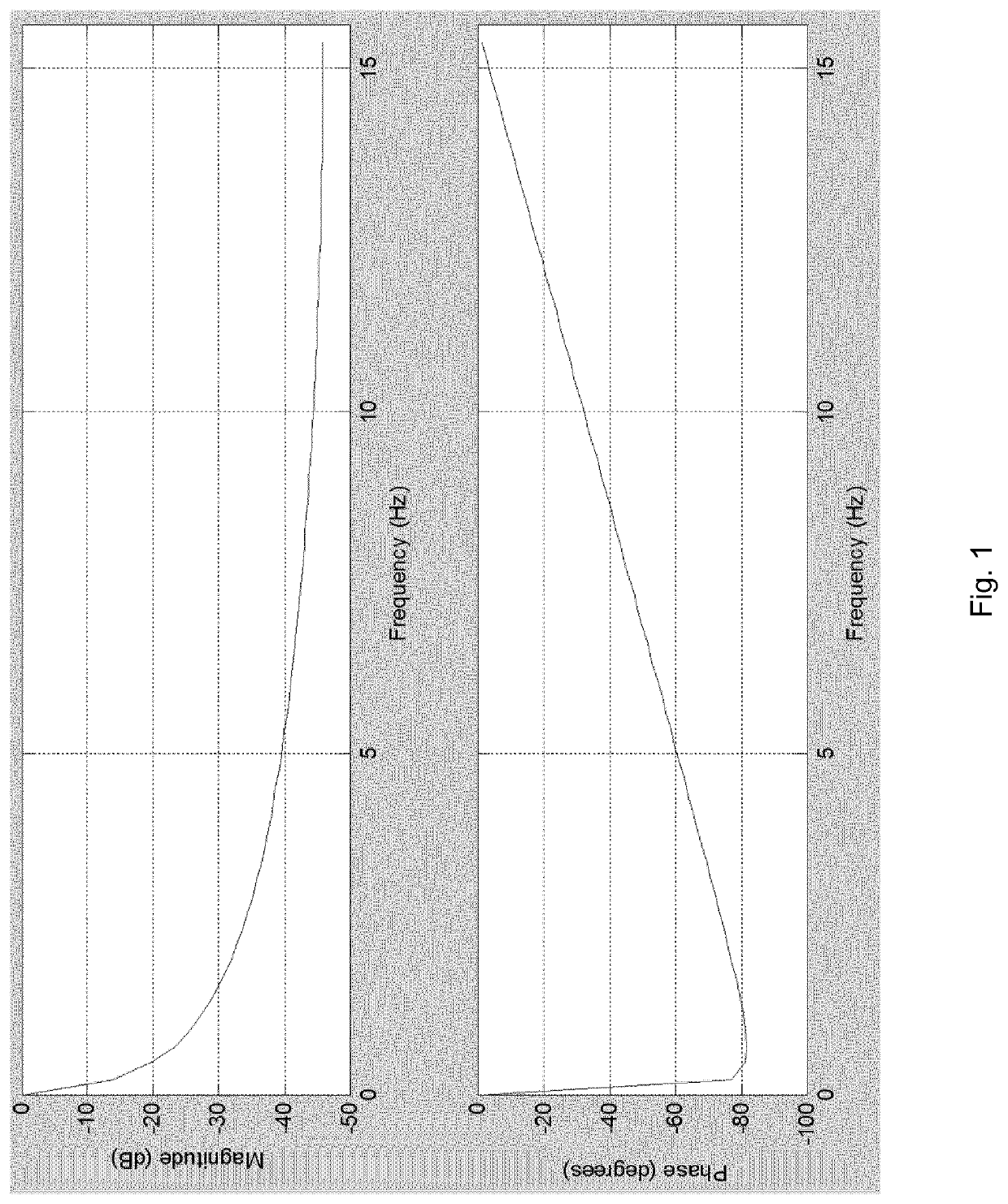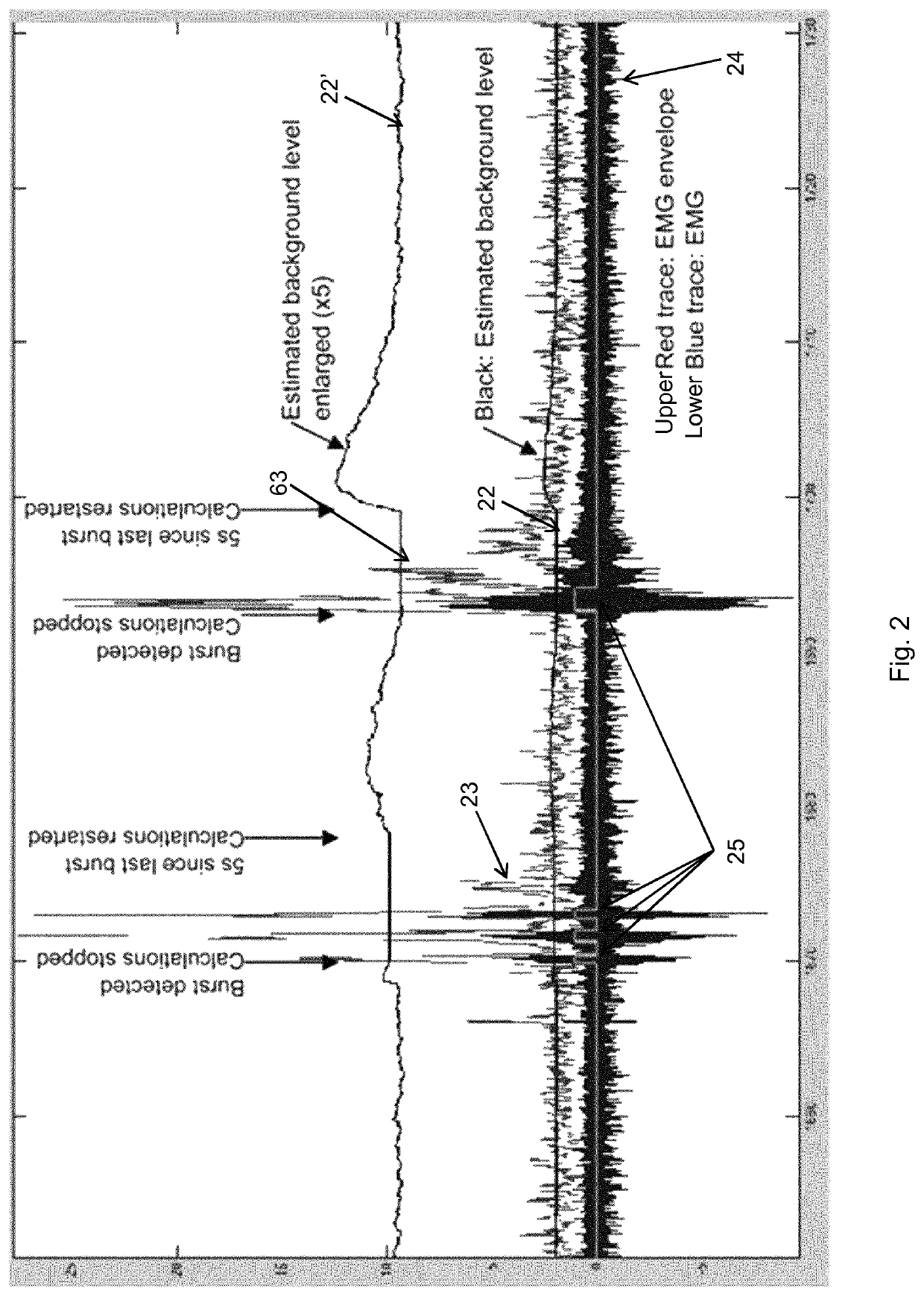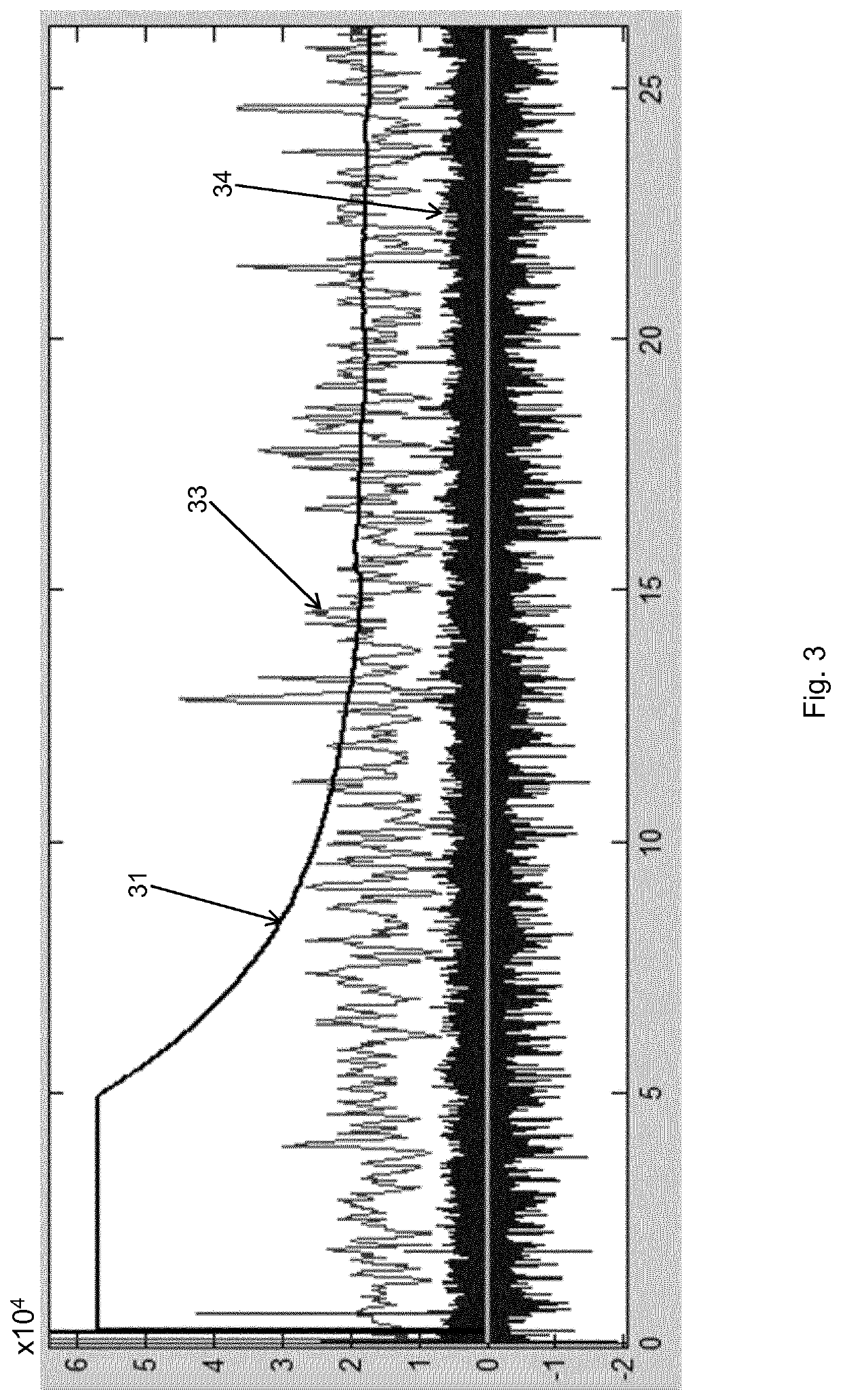Automatic detection of teeth clenching and/or teeth grinding
a technology of automatic detection and teeth clenching, applied in the field of automatic detection of teeth clenching and/or teeth grinding, can solve the problems of tooth wear, serious dental damage, damage or unwanted effects, etc., and achieve the effect of avoiding calibration and being convenient to us
- Summary
- Abstract
- Description
- Claims
- Application Information
AI Technical Summary
Benefits of technology
Problems solved by technology
Method used
Image
Examples
example 1
[0100]In order to calculate a background level, the background level may be a low pass filtered EMG signal envelope as here described.
[0101]The filter is a 1st-order autoregressive filter in the form:
y(n)=0.99·y(n−1)+0.01·x(n−80), where
[0102]x(n−80) is the 2.56 second old envelope value (80 samples / 31.25 samples / s=2.56 s),
[0103]y(n−1) is the latest value of the background level,
[0104]y(n) is the new value of the background level,
[0105]0.99 is the filter coefficient,
[0106]0.01 is a gain-factor on the input signal, to ensure an overall gain of 1.
[0107]The calculation is implemented in integer arithmetic, to reduce computational load in the embedded processor. This is done by multiplying the values from the FFT algorithm (which is an 8-bit algorithm), with a scaling factor of 10000. Further, the filter described above is calculated as
y(n)=(99·y(n−1)+1·x(n−80)) / 100
[0108]as decimal numbers cannot be represented in integer arithmetic.
[0109]The Magnitude and Phase responses of the filter a...
example 2
[0110]An illustration of an embodiment of the method for automatic detection of teeth clenching is shown in FIG. 2. In FIG. 2, the data is EMG data obtained from EMG signals. The signal envelope 23 is calculated by FFT of the raw EMG signal 24. As can be seen from FIG. 2, the estimated background level 22, 22′ is constantly changing with respect to time, except for the periods wherein the calculation is stopped, i.e. wherein the method is fixing the threshold level, and after which the calculations are restarted. It can be seen in FIG. 2 that four bursts 25 are detected in total.
example 3
[0111]An illustration of another embodiment of the method for automatic detection of teeth clenching is shown in FIG. 3. In FIG. 3, the data is EMG data obtained from EMG signals. In FIG. 3 is shown the initial output from the method when no activity related to the teeth clenching has been assigned. The raw EMG signal 34 is sampled at 2000 Hz. The signal envelope 33 is calculated by a 64-point FFT and averaging pins 7-13, as this corresponds to an RMS value of frequencies between 218 and 406 Hz. As can be seen from FIG. 3 the initial output of the background level 31 is rather high and the method waits 5 seconds before it starts calculating new outputs (assuming that a signal may have been present before the start of the method). The initial value of the background level 31 is set to a higher value than expected in the recorded signal 34. Due to the high start level and depending on the actual level of background activity, it can take up to 10 s for the filter to find the precise le...
PUM
 Login to View More
Login to View More Abstract
Description
Claims
Application Information
 Login to View More
Login to View More - R&D
- Intellectual Property
- Life Sciences
- Materials
- Tech Scout
- Unparalleled Data Quality
- Higher Quality Content
- 60% Fewer Hallucinations
Browse by: Latest US Patents, China's latest patents, Technical Efficacy Thesaurus, Application Domain, Technology Topic, Popular Technical Reports.
© 2025 PatSnap. All rights reserved.Legal|Privacy policy|Modern Slavery Act Transparency Statement|Sitemap|About US| Contact US: help@patsnap.com



